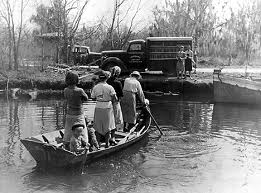It’s a Book—It Has No Joystick: Books and Libraries
Skip the B.S.
By Skip Eisiminger
“I am a proud non-reader of books.” —Kanye West, promoting his latest booklet
“In Bunraku . . . the chief reader holds out the text and bows to it . . . .” —Susan Sontag
CLEMSON South Carolina—(Weekly Hubris)—3/12/12—I do not own a Kindle, Nook, or iPad, and I have no intention of purchasing one, either. That is unless the makers enable a user to highlight a passage and copy it the way I print from an email or web document.
Until that happens, I’ll continue to invest in print media.
As I have stated elsewhere, if heaven has no books, magazines, or newspapers, preferably in hard copies, I do not want to go there. I simply owe paper, ink and traditional libraries too much to give up on them now. I know the Sumerians thought clay tablets would be the recording medium for eternity (just as the Egyptians believed in papyrus, and medieval Europeans bought stock in Pergamese parchment) but, until Kindle’s pixels can be conveniently transferred to a sheet of foolscap, I’ll put my faith in paper.
At 70, I now have shelves of vinyl and tape recordings that I can no longer listen to. I can imagine discarded piles of eBooks at mid-century, when some all-too-foreseeable new technology enables every book and musical composition to be implanted in one’s brain. If or when that happens, whoever inherits my paper files (estimated weight: 1,000 pounds) will enjoy peace of mind . . . knowing that they are going nowhere. If an item becomes too fragile, it can always be photocopied and returned to the file for another generation to read and fondle.
Just as Holden Caulfield positioned himself at the base of a cliff to rescue the children tumbling over the precipice, I have been a catcher of books.
I’m not a collector, however; I’m a reader—I catch and release.

Readers are those who might peruse The Great Gatsby a dozen times over 20 years, and copy something fresh gleaned from each excursion into their card file or commonplace book.
A collector, on the other hand, is one who sneers at the paperback Gatsby’s in Books-a-Million, yet spends $5,000 on a first edition sporting a pristine dust jacket. He’ll then shrink-wrap the poor thing and place it in a safety-deposit box.
The value of a book, however, lies not in what it does for our balance sheet but what it does to prod our minds and touch our hearts.
As for catching and releasing books, once I’ve finished, I place them in a pile outside my office for anyone who wants them. After my friends and students picked through the latest pile, I gave the remainder to the Clemson University Library. The librarians kept a few and sold the rest, but none went to the dump. I recall finding a dumpster half-full of books in front of the Columbus (Georgia) Public Library. Not one that I could reach turned to dust when I opened it, so I asked the head librarian if he couldn’t stack the books in the lobby and place a “Free Books to Good Homes” sign overhead. He said he didn’t like it any more than I did, but state law forbade giving away or selling books bought with public funds.
The Jews, I’ve read, solemnly bury a book that has outlived its usefulness, but I’ve yet to see one that couldn’t be read at least one more time, regardless of whose money bought it.
Despite one woman’s instructions in her will to bind her lover’s novels in her own skin, no book deserves a human sacrifice.
Hitler’s Mein Kampf proves that point, but neither would I burn all remaining copies of it, either.
The books that come closest to iconic status in the West include Shakespeare’s First Folio, Copernicus’s On the Revolutions of Heavenly Spheres, Gutenberg’s Bible, and Audubon’s Birds of America. Every known copy of these four, including the marginalia, has been lovingly catalogued.
Yet for all our reverence, only Audubon’s has not been on someone’s Index Expurgatorius at one time or another.
Indeed, books have been targeted so often that one Oxford college kept its volumes tethered with chains until 1799. Indeed, Hereford Cathedral still has its collection chained to the shelves, but this is mainly to ward off the predations of tourists.
Students from abroad are often amazed at the American open-stack system and public library accommodations. Think Bookmobile.
Indeed, in 1986, the Chicago Public Library System had about 7,500 copies of The Catcher in the Rye that were so long overdue they were listed as lost, yet the system continued to buy Salinger’s novel. Perhaps no library has bent over so far backwards as Vienna’s City Library: until 2006, for a nominal charge, the librarians at that hoary but tolerant institution would read “literary erotica” down the telephone to patrons.
I began this piece by admitting my anti-technology bias, but I’ll close with an admission of admiration for those who are working to put every book written online for free. Google has not asked permission to place my corpus in the public domain, but they are welcome to it. Personally, I’d rather have someone read a book of mine than collect a royalty; but then I don’t make my living entirely with a pen.

Despite some Luddite tendencies, I never cease to be amazed at what technology is doing for researchers and readers: I read recently that 95 percent of all humanistic and scientific inquiries begin with Google.
In 2009, I was looking for a book that the Clemson Library did not own, so I went to the interlibrary loan office on the fourth floor, where the librarian turned to his computer, typed in worldcat.org and, in seconds, I knew that the Anderson Public Library (about 15 miles distant) and the Furman Library (about 30 miles away) had a copy of the out-of-print title.
Now I could have driven to either location in under an hour, but I was not pressed for time, so I asked for the book to be delivered. Two days later, it was in my office mailbox. By contrast, some Irish librarians in the 18th century locked patrons in carrels to prevent precious books from wandering off.
While I was marveling over WorldCat, the ILL librarian said that, as recently as 1995, Oxford students had to wait an average of two hours while a book just a few meters away passed through 13 pairs of hands before the patron could open it. I said that open stacks are a blessing but wished more students appreciated them. Indeed, a friend of mine who works in the university bookstore has noticed a disturbing phenomenon: scholarship athletes who pay nothing for their textbooks often sell them back to the bookstore a semester later . . . still in their cellophane wrappers.
Alan Fletcher observed that books resemble humans in that many have a preface, body, spine, back, appendix, and footnotes.
We reach maturity when we recognize that, taken as a whole, these “people” are more trustworthy at reporting the truth than our parents, regardless of how much they love us.
And though technophiles today sneer at “treeware,” my heart is still in the 10th century . . . with Abdul Kassem Ismael, the Grand Vizier of Persia.
Ismail took along his 117,000-volume library strapped to 400 camels wherever he traveled. To expedite his reading pleasure, his “Bookmobile” had been trained to walk in alphabetical order.
You’ll have to trust me on this, but if he’d been able to transport his library in a Kindle, the inns and oases where he spent the night along the way would not have been the same.
4 Comments
fern driscoll
I believe you can underline and copy text in the e-readers. I have a Nook and can certainly unerline. There is also a program to share books with others. I’m a retired librarian who is about to purchase (more!) bookcases… but I love my e-reader, too.
fern driscoll
Excuse me, I meant ‘underline’…
Skip Eisiminger
It’s not the underlining, it’s the copying that has me concerned. I’ve heard it can be done, but it’s a real hassle. For now, I’ll underline my books and transcribe or photocopy what I wish to file.
John Idol
As a diehard booklover, I stand wi th you. A book in the hand is a book that sinks in through some thing like osmosis. Long live the book!